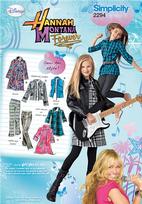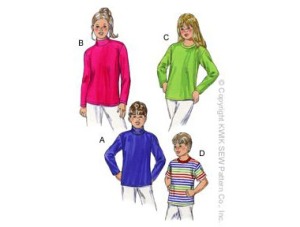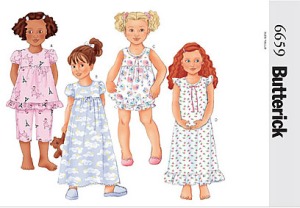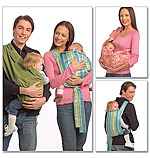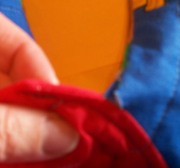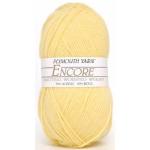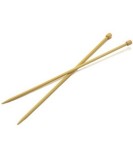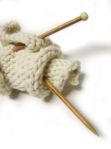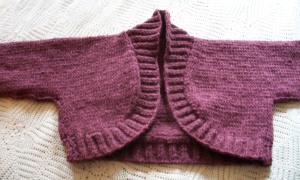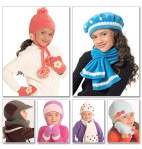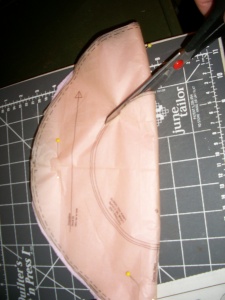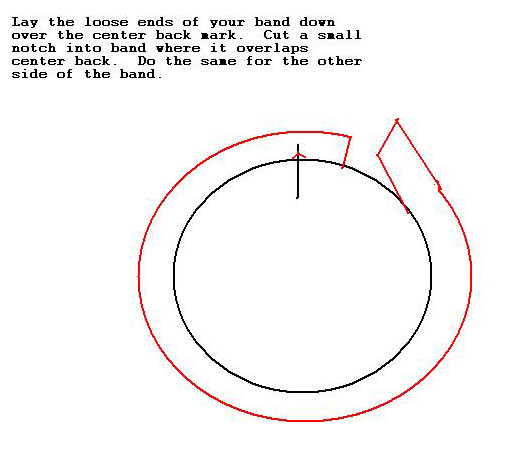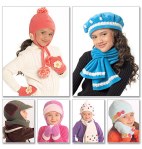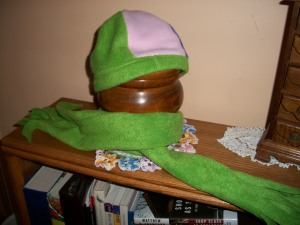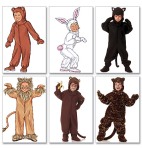My daughter likes to wear shorts and a t-shirt to bed. This year we had plenty of tees, but few PJ bottoms. To keep her from parading around the house in her unders, I decided to sew up some quick pajama shorts.
Previously I had made a nightgown from this pattern and was on the verge of discarding it, when I thought that it could easily be graded up slightly, (the original being so oversized,) and I might be able to make the panties into shorts by omitting the elastic at the legs. Why buy a fresh gym shorts pattern when I already had essentially the same thing.
I also had a laundry basket of discarded summer tees. For once, I had the spare fabric to finally perfect fitting the crotch seams for my daughter – something I can transfer to other patterns.

The pink shorts are the RTW pair that I want to emulate. The first try at the unaltered pattern is the yellow pair and you can see how much larger they are than the RTW. The yellow pair bagged in the front waist when my daughter tried them on.
Pros:
Though this pattern was cut for a size 5, it easily fit my 6X/7 Slim sized daughter.
Very few seams making it a quick sew. One for which you soon have a finished project and have not expended a lot of mental attention – perfect for mothers of young children.
One pattern piece along with a cut of elastic.
If you only have five or ten minutes to sew, you will be able to cut and sew this pattern in just a few sessions.
Cons:
If your child is a tricky fit there aren’t a lot of seams to work with.
The pattern sizing – sigh! Has no one in the industry redesigned children’s patterns to match RTW? The waistline of this pattern is at the natural waistline while my daughter and her little friends barely know where their waists are located. They all wear their pants at the navel and I consistently have to adjust children’s patterns to follow suit. This one is no exception.
The length of the lower hemline option seems much too long to me. Again little girls wear their gym-style shorts upper mid-thigh rather than towards the knee.

I didn’t dare try a 4-line stitched elastic waistband as the elastic grows and distorts whenever I try this.
Some Assembly Required:
I sewed the crotch seams, then inserted the elastic waistband. The original RTW shorts I was copying have a 4-line stitching of the elastic. I find the elastic grows and stiffens if sewn over so many times, so I settled on the simplest elastic application.
Fabric: Old T-shirt fabric.
Finetuning:
Sadly my serger appears to be going kapoot, so I did not serge the seams. Instead I did a double line of zig-zag stitching. It isn’t the most professional inside finish, however the material is knit so it won’t ravel. And old t-shirt knit at that allowing me to more easily justify the simpler finish .
Will I Sew it Again:
Yes, definitely. I finally got the pattern adjusted to fit perfectly. Now I only have to grade up for at least the next two sizes.
Advice to Others:
Use an old tee to make the practice muslin if yours are wide enough for the pattern piece. And if you do use a t-shirt, utilize the RTW hemline for the shorts hemline saving you an extra step and making the garment look more RTW, as I have always found that the standard mechanical machine’s zig-zag stitch does not much resemble a RTW finish.
Overall Style Grade: Um, A – I guess. This is such a classic that it hardly seems a style.
Results Grade: A, after you finetune the fit, you will get consistently good results.





